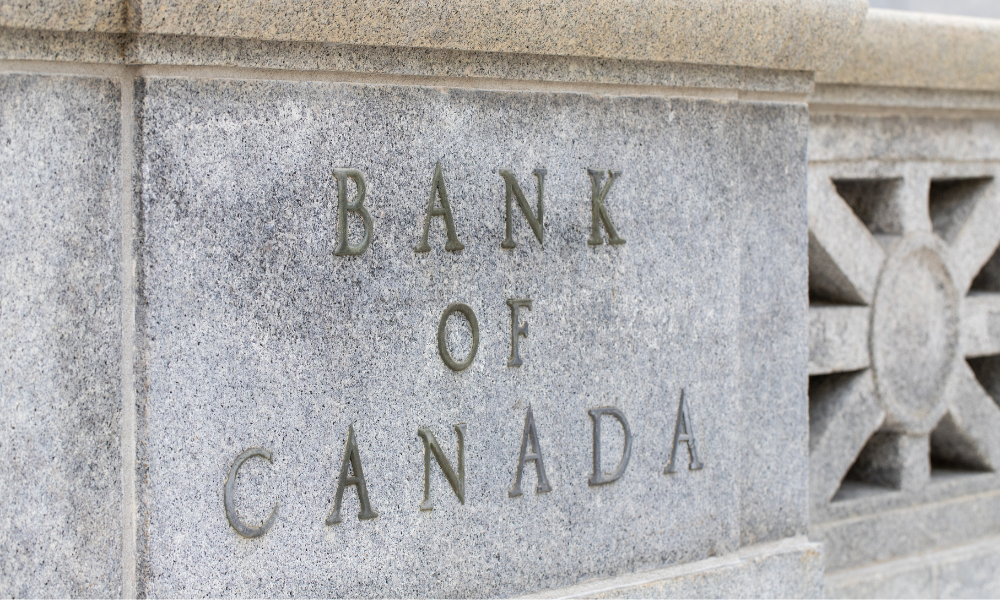Officials split over whether to hold or cut as inflation and trade tensions collide

Canada’s central bank nearly hit pause on interest rate cuts earlier this month, as growing trade tensions with the United States complicated its efforts to support the economy without fuelling inflation.
On March 12, the Bank of Canada cut its benchmark policy rate by 25 basis points to 2.75%, marking the seventh consecutive reduction since last summer. But according to a summary of internal discussions released Wednesday, the decision wasn’t straightforward.
“Some members suggested that it could still be appropriate to maintain the policy rate at 3% until there is more clarity around tariffs and more information about their macroeconomic impact,” the summary said. Other members felt that ongoing uncertainty had already shifted the outlook enough to justify another cut.
In the end, the governing council moved forward with the rate reduction, saying it would “provide some help to Canadians to manage the uncertainty related to tariffs.” Still, officials cautioned that any future cuts would be approached carefully, with the Bank expected to “proceed carefully” as conditions evolve.
Financial markets are currently pricing in a roughly 30% chance of another cut at the Bank’s April meeting, with one or two more rate reductions expected by year-end, according to LSEG data.
The March decision came against a backdrop of rising concern over how the escalating US-Canada trade conflict, triggered by president Donald Trump’s new tariffs, might ripple through consumer behaviour, business investment, and price inflation.
Confidence has already taken a hit, according to the central bank. A recent survey showed that consumers are cutting spending, while businesses are freezing hiring and pulling back on investments.
“The shift in sentiment was likely to translate into a slowing in domestic demand going forward,” BoC said. “How much of a slowing was hard to say but they recognized it could be considerable.”
At the same time, the bank faces a unique dilemma: trade wars tend to hurt growth and employment while driving up prices, a difficult combination for any central bank trying to manage inflation expectations.
“Members discussed whether they were seeing early signs of inflationary pressures coming from higher input costs related to tariffs and uncertainty,” the summary said. “They agreed it was too early to see these impacts in the CPI data.” They also acknowledged that it was unclear how quickly or how strongly those costs might pass through to consumers.
Governor Tiff Macklem reinforced this uncertainty in a speech last week, stating that the Bank “could not reliably forecast where the Canadian economy and inflation was headed” given Trump’s unpredictable policy shifts.
“That means being less forward-looking than normal until the situation is clearer,” Macklem said. “And it may mean acting quickly when things crystallize. We need to be flexible and adaptable.”
Read next: Further Bank of Canada cuts still likely in 2025 despite cautious language
Economists say the bank’s cautious tone is no surprise. Benjamin Reitzes, managing director of Canadian rates at BMO, noted that policymakers remain “extremely sensitive to upside inflation risks after the past few years,” particularly with fiscal stimulus likely to be part of Canada’s trade war response.
“That won’t keep the BoC from cutting rates if tariffs worsen,” Reitzes said, “but it suggests any further easing won’t be aggressive and limits how low the Governing Council is willing to go.”
Former Bank of Canada governor Stephen Poloz also weighed in, warning that while Canada must respond to immediate pressures, long-term strategy matters.
“When the dust settles, we will need our US partnership, just as much as we need it today,” Poloz said during a webinar this week. “We have to think long-term and make the best of a bad hand at this stage, knowing that there will be another hand in due course sometime in the future.”
Make sure to get all the latest news to your inbox on Canada’s mortgage and housing markets by signing up for our free daily newsletter here.



